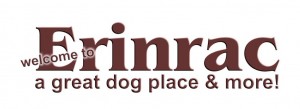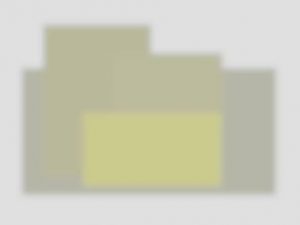At a fun day with Rarer Gundog Spaniel Club of Victoria in 2016, I was physically introduced to tracking with my sulky cow, I had taken her as part of an expanded socialization endeavour on my part as she had taken so badly to being rehomed in Perth that she came back to me after only a month.
I was reasonably conversant with tracking from my years of typing and editing the all breeds dog magazine Top Dog Journal, we had trial tracking articles and specialists writing about search and rescue and the then fledgling cadaver dog recovery trackers. And, naturally, the articles covered scent and scent properties. I was also fully aware that Clumbers are natural scent trackers and physically built to be great trackers. Tracking is natural for Clumbers, they are good at it. The sulky cow, despite apprehension, was good on her first track, so I gave her one or two tracks at home, and then in a pubic area.
So I had some questions and while disappointed with the websites I found, here are the answers I have managed to put together from websites and books (see below), and brain-picking friends.
Go towards the bottom for info about doing your own very first track!
What are dogs’ tracking? Dogs track scent, and for trialling for TDs etc that is ground scent, they must follow the line of the scent on the ground not scent drifting on the air.
What is scent? it is an aroma, a combination of excretions and lost particles from something, from humans it includes skin cells, scent ladened particles and fibres from clothing, oily excretions and sweat, even gases … mostly tracking references talk solely of skin cells, I think they underestimate the impact and value to the dog of the other particles I mention above. Another thing that has been demonstrated previously is that pressure will damaged grasses so the dog could be easily following that as well, as to paving, it really seems likely the dog is relying on cast scent. Overall I fancy dogs are smart enough to use a combination of indicators of the track.
Do dogs stick to the precise line of the scent trial? No, not always, they can, but terrain, wind, temperature, etc will affect where the scent lands and if it stays in that position. Scent trials are rarely a simple narrow line of scent. For trialling the dog is expected to work on or very close to the track (where they have walked) of the tracklayer, the scent trial may not mimic that track 100%, so some dogs won’t naturally follow closely enough to pass sometimes, this is one thing to consider when training for trials.
Does choice of clothing and or shoes make much difference? You’d be tempted to think so, but I have laid most of my tracks wearing gumboots, and have read to wear gumboots is ok … triallers may not be happy. If skin cells were the only thing that a dog was tracking then if the tracklayer was wrapped and sealed up the dog would not be able to track, which fits my concept that it is more than skin cells a dog tracks.
Do you as handler pick up the article? In training I have no hesitation picking up articles I have placed as they are scented by me anyway, if a friends has laid a track I won’t touch the article to reduce cross scenting.
What sort of things can be used as the articles that should be found when the dog is tracking? In Australia we generally use socks, in America gloves are popular. You want something that retains the tracklayer’s scent, so general advice is a cotton or woollen sock that is thick like workmen’s socks
What colour should the article be? A colour the dog can’t easily discern, you want ‘prove’ they are using scent not vision to find the item. Triallers use dark coloured socks, me, as I don’t use flags to mark the track, and I have no trialling aspirations, use fluro orange socks, which I am assured wouldn’t be allowed in trials (may be because the handler can see them, it is not because a dog can easily see fluro orange which tracking aficionados know as they often use fluro orange flags to mark tracks), it means I can easily spot the article and pick it up after the track. I wouldn’t use yellow or blue socks as these are very easily discerned by a dog. Check out my article on dog vision.
these show what we see, and to the right what the dog is believed to see
How to ensure the item has enough scent on it. Really the article doesn’t need a heap of scent, except perhaps the start article to indicate to the dog it is THIS person you are tracking … the articles within the track are there to prove the dog is on track and aware this article was left by the tracklayer, so a light scent would be sufficient. There is advice to wear the item for hours, or stuff it under your outerwear, heavens, it won’t take that much if you truly believe a dog can track where someone has simply walked, unless of course you use a very strongly scented washing powder and need to displace that smell. Scrunching up and rolling in your hands or a short period of residency against your body will do the trick. You don’t want the article so smelly with you and everything else that it clouds the local environment and tracklayers path scents.
What sort of indication of an article find is required? For me, not trialling I like the dog to stop and wait for me to catch up, in trialling in Australia I understand a decided acknowledgement by the dog is required but the dog need not stop.
In introduction tracking training it is often recommended that placing a few treats along the track as well as the article is a great way to start. For gundogs I figure this is only adding a layer of complexity, gundogs are generally ground scents, placing food along the track then adds more scents to the track for the dog to interpret and act on. A friend suggested the treats along the track is an option for breeds that naturally air scent to encourage them to drop their heads to ground scent.
How close should you be to a novice dog? Not close enough to make the dog feel crowded and so distract it, close enough to ‘talk’ the dog through complications (although many say just let the dog do its stuff, mine do tend to check in with me and I’ll talk them through). A 1-2 metre show lead isn’t long enough, the 10 metre trialling lead is toooo long, get a 5 to 6 metre one to start them off, but you’ll need the 10 metre one very soon!
Which harness? Well there are lots to chose from, I have a really nice robust one from New Zealand, it could be more lightweight, and actually less confusing to put on. You do not want any restrictions, so no chest bands. The nonrestrictive ones are often called Y front, which cross the body above or in front of the shoulder joint.
harness from Real Dog Company, New Zealand, picture gone, Google them
How to fit a harness? You can get your harness made to fit, but as I have more than one dog I went for an adjustable one. the harness should fit snuggly, but not tightly, and should not move to any great degree if the dog leans into the tracking line. Look for at least one finger and no more than two fingers space between the webbing and the dog, and make sure the skin is not pulled up at point.
How long the tracking line? For beginning training 5 metres, and once started and doing well 10 metres. Mine come from K9Pro
Sample starter tracks, I like three articles, the start article, and then two more for the first two or three tracks, I am happy to do these in a small area with the articles fairly close, at least 3 metres apart but less than 10 metres, I want the dog to ‘win’ straight away. I will do a straight line between the three articles first up, then a bend at the second article, then a bend between articles. I vary the vegetation and ground between tracks, include slopes and ditches (beware scent hangs differently around different terrain and vegetation). Dogs can track what we need is to have them track what we ask and when we ask. Following Ghosts by John Rice and Suzanne Clothier has some great thoughts on tracking.
Can you lay your own training tracks? Yes, of course, but before trialling practice with other people being your tracklayers and of course for trials the tracklayer is at the end of the track, for training the tracklayer need not be on hand.
How far between articles? Start close and work the distance out 😉 For the test one for TD in Australia it is one article somewhere within the 400 metre track, by test 6 Tracking Dog Excellent (TDX) three articles somewhere in the 1200 metre track.
Aging your tracks/how old should the track be?. First tracks don’t need much aging, and it makes it good and easy intro for the dog; aging is the time between the tracklayer walking the route and when you start the dog on the track. Test one is between 20 and 40 minutes old when the dog is started so if you want to trial you will need to include longer aging steps in your training.
How many turns? Again increase the number as the dog becomes successfully more experienced.Test 1 requires two turns, turns demonstrate the dog is ground scenting when tracking.
Angle of turns? Beginners need to do shallow or open turns or route adjustments. Acute (sharp or less than 90 degree) turns should be carefully laid until you are sure your dog is properly tracking becasue the scent could well drift back onto the lead up line.
Terrain? just use what you have, some say use virgin ground, but lay the track reasonably and you will have your dog tracking with less regard for the background noise of the terrain quicker, and it is not easy to find ground someone or another animal hasn’t walked over! You are not going to track up sheer walls or cliffs, you track where the tracklayer can walk reasonably comfortably and easily, if you want to get to search and rescue and tohigher level trialling, then terrain can become really challenging. My first tracks tend to be on shortish grass, but one or two successes and I am very happy to cross gravel paths, walk along gravel paves, or cross a concrete drive. Too easy and it becomes boring and the dog loses interest, but don’t make it too hard and put the dog off that way either.
Long or short grass? Either, or both, long will tend to be wet longer. Clumbers don’t mind working into thick stuff, other breeds may be daunted by long grass or thick vegetation, play along with their needs as they develop their confidence.
Other vegetation? yes, but start to read about scents and how the terrain (lay of the land and type of vegetation) affects and holds scents so you understand what your dog may be presented with and is doing.
Time of day? The reason I am not thinking about trialling is the EARLY starts (i have chores at home that need doing before leaving). Early in the day is great for tracks, the scent falls and settles well, and lifts as the day warms up. You can lay tracks later in the day and when it is warmer, but tracking for dogs does see them heat up and get thirsty and scent trials can be lost in such conditions.
How long before we can reuse an area and lay another track? Allow at least a day, or a shower of rain.
How far between tracks when laying a couple of tracks in the one field? For training allow AT LEAST 5 metres with a light wind, probably more with a stiff breeze. If you have two tracklayers for the two tracks they can cross each others track, I wouldn’t suggest a single tracklayer laying two tracks did this unless you have a very advanced dog.
Fouling on tracks. Apparently, I assume if you pick up, for trials this is fine, and it does occur in training. The sulky cow I mentioned above did this, I assumed she was overwhelmed and not going to track, but she came straight back in and onto the track.
How do you know your dog is tracking the tracklayer? Head down and moving along in the general direction of the track, finding the article and looking for more track.
How to handle the tracking line? Well all sorts of ways to do and not do, but what has worked for me is to allow it to flow through my two hands leaving a long straight train behind me of unused line as the dog works forward, to raise my hands above my head if and when the dog wants to circle around me or in front of me to relocate the track. Never restrict the flow of the line, keep up with your dog, and bring in excess tracking line from between you and the dog.
Tracking word commands? Your choice, I happen to have adopted ‘trackon’
Laying your very first tracks
Don’t rush out and buy stuff to lay your first tracks, one or two successes and you will want to grab a harness, a long tracking line, and maybe better socks.
Step one, gather up some yummy treats, bite size, three gather three cotton or woollen socks, the thick Explorer style are great but dress socks will do, add two leads together to make a longer one, have a fixed collar in lieu of a tracking harness if you don’t have one, choose your tracking area for this try out.
Step two stand on the edge of the area you have chosen and survey the scene … your back yard will probably do nicely. You want to walk a straight line (a wee wobble isn’t an issue) but you need and escape route at the end of the track so you can take a wide berth to return to the start.
Step three, having decided on your route, give the first sock and another massage in your hands and lay it down at the start … I don’t leave food here.
Step four walk out the 3 to 10 metres stop and lay sock number 2 and this time slip a small bunch of small treats underneath it so the dog can self reward
Step four walk on and lay the third and final sock and a jackpot of treats
Step five, continue on and then swing a wide berth to get back to base
Now to the fun part!
Step six, TRACKING! Place the fixed collar on your dog, and attach your mock up tracking line on, show your dog the first sock and when he shows interest then lots of calm praise and may be some yummy treats, keep the excitement level down as you now need to ‘will’ him onto tracking to the next sock, hold your tongue and THINK about tracking onto the next sock, which is why you shouldn’t have it too far away. Once he appears to be tracking, QUIET praise and ensure the lead is free and not restricting him, as he gets near the next sock quieten more and will him to find the sock and treats, let him take the treats and lots of low level but excited praise for finding the sock. Go quiet again and suggest he tracks on, again, quite until he appears to be tracking then murmured praise, and lots of low level but excited praise when he finds the next sock and the jackpot. To indicate there is no more, put hm back onto his regular leading gear and walk away. I do have some that track me back beyond the last, you can’t discourage that!
I spoke to a dog library friend about books to read, to refresh my memory, she recommended
Tracking by Sonja Needs, which is great and detailed but very much written for those trialling, particularly in Australia, and a little hard to follow if you don’t have some grounding in the ‘sport
Try Tracking! by Carolyn A Krause which answered all the questions I thought relevant that needed answering, so start with this book. It is American and written for puppies, but it works for adults too. My favourite.
My second favourite for tracking newbies Following Ghosts by John Rice and Suzanne Clothier
Where do you find these books.


